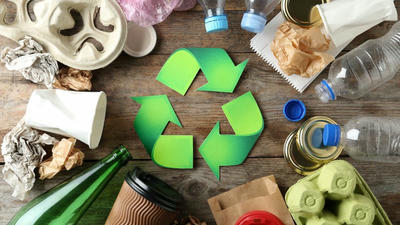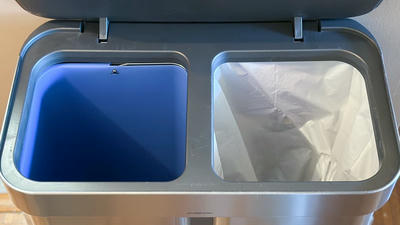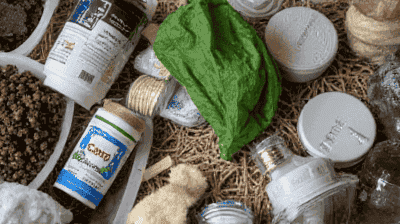Recycling 101: Sorting Trash for a Greener Home



In the quest for a sustainable lifestyle, recycling stands out as a critical practice that helps reduce waste, conserve natural resources, and minimize environmental pollution. Understanding how to sort your trash effectively is essential for maximizing recycling efforts and ensuring that materials are processed correctly.
Recycling is the process of converting waste materials into new products, thereby preventing the waste of potentially useful materials. This process involves collecting, sorting, processing, and manufacturing new goods from recycled materials.
Conserves Natural Resources: Recycling reduces the need for raw materials. By reusing materials like paper, glass, and metals, we conserve forests, water, and minerals.
Reduces Pollution: The recycling process emits less pollution compared to the production of new materials. It helps decrease air and water pollution and mitigates climate change.
Saves Energy: Recycling often requires less energy than producing new products from raw materials, leading to reduced greenhouse gas emissions.
Decreases Landfill Waste: Recycling diverts materials from landfills, prolonging their lifespan and reducing the need for new landfill sites.
Supports the Economy: The recycling industry creates jobs in collection, processing, and manufacturing. Additionally, businesses that use recycled materials can benefit from lower material costs.

Different materials can be recycled, each requiring specific handling processes. The primary categories of recyclable materials include:
Paper and Cardboard
Plastics
Glass
Metals
Understanding what cannot be recycled is equally important for effective waste management. Common non-recyclable items include:
Food Waste
Certain Plastics
Hazardous Waste
Mixed Materials
Recycling guidelines can vary significantly based on your locality. To maximize your recycling efforts:
Visit Your Local Government Website: Many municipalities offer resources detailing what can and cannot be recycled in your area.
Check Recycling Symbols: Familiarize yourself with recycling symbols and codes that indicate the recyclability of plastic products. These codes can help determine which containers are accepted by your local recycling program.
Some communities provide curbside pickup for recyclables, while others require residents to drop off materials at designated recycling centers. Knowing your community's program will help you plan your waste management routine effectively.

Creating an efficient recycling system at home is essential for effective waste management. Here are the steps to set up a successful recycling system:
Create Clear Recyclable Bins
Separate Containers: Use separate bins for each type of recyclable material. Label bins distinctly with clear signs for paper, plastics, glass, and metals.
Accessible Location: Place your recycling bins in accessible areas, such as the kitchen, garage, or utility room. This encourages everyone in the household to properly dispose of recyclables.
Discuss Recycling Importance
Share Knowledge: Educate family members about the importance of recycling and the impact of their contributions to sustainable living.
Visual Aids: Use posters or charts that illustrate what can and cannot be recycled. These aids serve as handy references when family members are sorting waste.
Set a Cleaning Schedule
Regular Checks: Designate a time each week to check the recycling bins, ensuring that they do not overflow, and take out items that need to be removed.
Empty Bins Regularly: Encourage family members to empty recycling bins frequently to maintain a tidy and efficient recycling system.
Practice Pre-Sorting at the Source
Sort As You Go: Encourage everyone in the household to sort trash as they throw it away. This habit minimizes contamination and ensures that recyclable items are separated at the start.
Use Bags or Containers: If you have limited bin space, consider using reusable bags or containers within your recycling bins to further sort materials.
Types of Paper That Can Be Recycled
How to Prepare Paper for Recycling
Identifying Recyclable Plastics
Tips for Recycling Plastics
Types of Glass That Can Be Recycled
How to Prepare Glass for Recycling
Common Recyclable Metals
Instructions for Recycling Metals

In addition to standard recycling practices, there are many creative ways to repurpose and recycle materials around your home. Here are some ideas:
Repurpose Glass Jars: Use glass jars as storage containers for food, crafts, or home organization.
Transform Old T-Shirts: Convert old t-shirts into reusable shopping bags or cleaning rags.
Create Planters: Turn containers, such as tin cans or plastic bottles, into creative planters for your garden.
Crafting with Recyclables: Use cardboard and scrap paper to create art projects or science experiments with children.
Furniture from Pallets: Repurpose wooden pallets into outdoor furniture or decorative shelving.
Bottle Cap Art: Collect bottle caps to create unique pieces of home décor or art.
Participate in Local Initiatives
Engage with Schools
Buy Recycled Products
Understanding Contamination Issues
What to Do with Hard-to-Recycle Items
Clarifying Common Misconceptions
Myth: All plastic is recyclable.
Myth: Rinsing is unnecessary.
Teach Kids About Recycling
Create Recycling Challenges
Recycling is a vital practice that plays a crucial role in promoting sustainability and creating a greener home. By understanding the fundamentals of recycling, setting up an effective sorting system, and addressing common challenges, you can significantly reduce your household waste footprint.
Through the collective efforts of individuals, families, and communities, we can make a meaningful impact on the environment. Start today by evaluating your recycling practices and embracing the small changes that lead to a better future for our planet. Together, we can create a cleaner, healthier environment for generations to come.